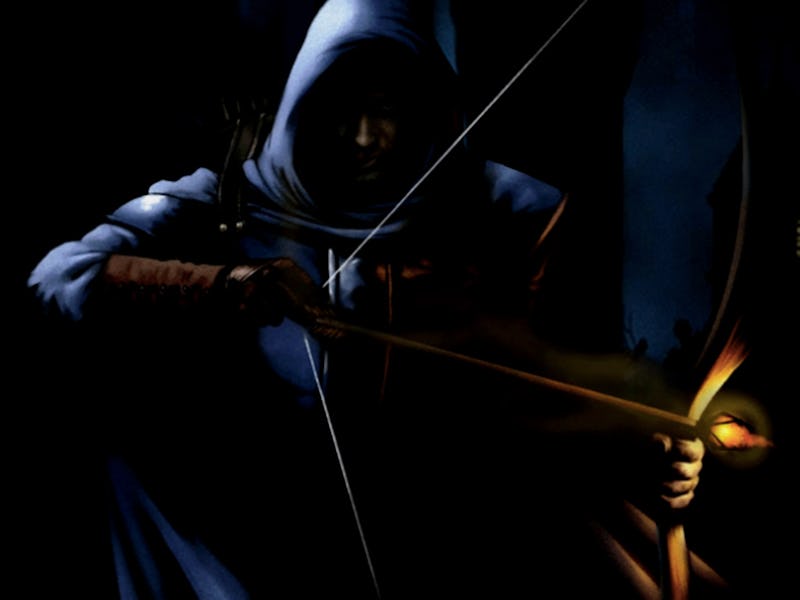The Original First-Person Stealth Game Has Still Never Been Topped
Sneak your way through a steampunk city in this trailblazing ‘90s classic.

The year was 1998. Valve had just released Half-Life, an immersive, groundbreaking first-person shooter that decidedly altered the meaning of intuitive, uninterrupted gameplay. But for all its innovations, Half-Life was still a game about fighting monsters. Enter: Looking Glass Studios.
On December 1, 1998, Looking Glass released something new: a first-person stealth game focused on non-confrontation strategies over brazen combat. That game was Thief: The Dark Project and it laid the foundation for the stealth genre for years to come.
The understated brilliance of Thief lies in the way it etches its dark, medieval-fantasy world within the aesthetics of a steampunk setting, which the protagonist, Garrett, has to navigate as — you guessed it — a thief. The game’s highly stylized prologue shows Garrett resorting to pickpocketing to get by. After he gets caught, Garrett is forced to pursue a life of thievery under the machinations of a powerful organization called The Keepers. Thus begins a string of missions that get progressively more dangerous and baffling.
Darkness is your only ally, and sneaking around is infinitely more rewarding than sparring with the city guards head-on. While Garrett can fight (some levels demand bonking guards on the head by sneaking from behind or fighting an undead army in the catacombs), his skills lie in melding with the shadows undetected while relying on his immediate environment to gather significant intel.
The word of Thief mixes steampunk technology with magic to create something unique.
Thief doesn’t believe in player-handholding but it does provide limited, practical resources to help complete each objective. This is where the game’s sound design and unique gameplay mechanics emerge as unparalleled. Players can sneak around tunnels and press their ears to the wall to eavesdrop on a conversation if they choose to or watch a dynamic exchange between two enemies play out while standing four feet away. The sound of your footsteps actively helps you gauge how much noise you’re making, while tools like water arrows can be used to douse out lights, which are often a greater threat than overpowered enemies.
The environment is a constant threat in Thief and one wrong move can spell doom. For example, you’ll need to remember that stone tunnels are louder to sneak around than carpeted floors.
Over the years, popular stealth games that define the genre today, such as Hitman or Dishonored, have attempted to incorporate this aspect of environment-dependent immersion, but have always deemed stealth as optional. You can creep around in Dishonored, but the price of being discovered isn’t too dire when an array of combat options are readily available to quickly remedy the situation. This is not the case with Thief, where close combat can lead to other enemies being alerted — or even an instant Game Over.
Combat is always an option, but it’s rarely the right one.
The game’s HUD (heads-up display) features a standard health bar grouped with a visibility gem that allows players to discern their ability to see in the dark — a crucial element that urges one to take refuge in the natural nooks of darkness cast by environmental objects. The loot accumulated in a mission needs to be expended before the next one starts, deeming every stolen goblet or coin valuable to the quality of the gameplay. Difficulty levels not only feed into the strength of enemies but provide added objectives that make the experience more challenging, forcing Garrett to break into hidden cellars or creep around heavily guarded maps.
To make matters more challenging, Thief feeds you its intricate storyline in unconventional ways. Players need to be inquisitively keen and thorough when they pick up cryptic notes or chance upon unnerving paintings to learn more about a world that is a mesh of organic and mechanical infrastructure. The machinery might be dated by modern standards, but glimpses of magic keep the intrigue going, creating a grounded, yet surrealistic experience viewed through the lens of a man struggling to make ends meet.
Whether you use moss arrows to muffle your footsteps or throw objects to distract enemies with sound, Thief: The Dark Project remains inimitable in its fundamental and creative use of immersive evasion tactics. Even 25 years later, this oft-forgotten stealth game continues to impress with no diminishing returns.